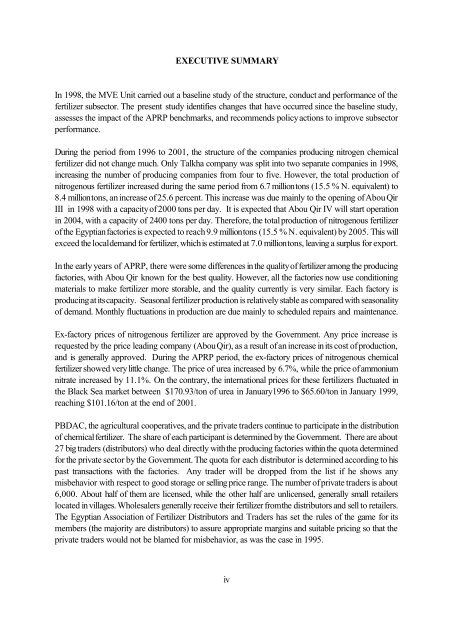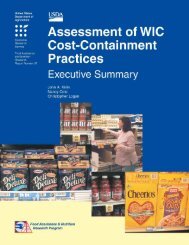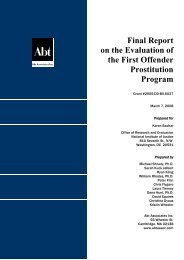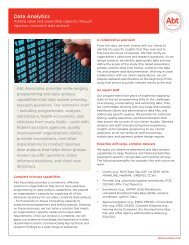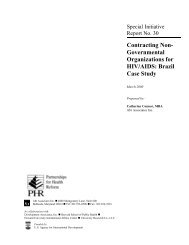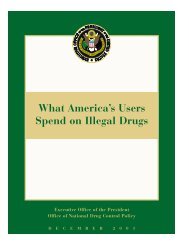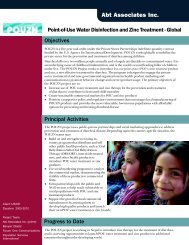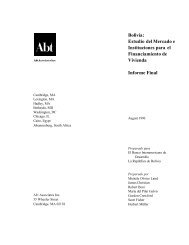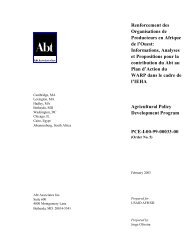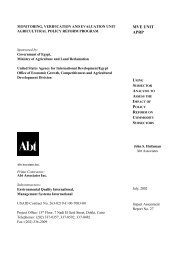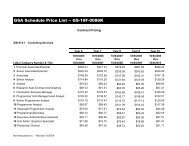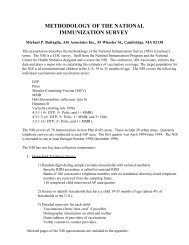Fertilizer Production And Marketing In Egypt ... - Abt Associates
Fertilizer Production And Marketing In Egypt ... - Abt Associates
Fertilizer Production And Marketing In Egypt ... - Abt Associates
You also want an ePaper? Increase the reach of your titles
YUMPU automatically turns print PDFs into web optimized ePapers that Google loves.
EXECUTIVE SUMMARY<br />
<strong>In</strong> 1998, the MVE Unit carried out a baseline study of the structure, conduct and performance of the<br />
fertilizer subsector. The present study identifies changes that have occurred since the baseline study,<br />
assesses the impact of the APRP benchmarks, and recommends policy actions to improve subsector<br />
performance.<br />
During the period from 1996 to 2001, the structure of the companies producing nitrogen chemical<br />
fertilizer did not change much. Only Talkha company was split into two separate companies in 1998,<br />
increasing the number of producing companies from four to five. However, the total production of<br />
nitrogenous fertilizer increased during the same period from 6.7 million tons (15.5 % N. equivalent) to<br />
8.4 million tons, an increase of 25.6 percent. This increase was due mainly to the opening of Abou Qir<br />
III in 1998 with a capacity of 2000 tons per day. It is expected that Abou Qir IV will start operation<br />
in 2004, with a capacity of 2400 tons per day. Therefore, the total production of nitrogenous fertilizer<br />
of the <strong>Egypt</strong>ian factories is expected to reach 9.9 million tons (15.5 % N. equivalent) by 2005. This will<br />
exceed the local demand for fertilizer, which is estimated at 7.0 million tons, leaving a surplus for export.<br />
<strong>In</strong> the early years of APRP, there were some differences in the quality of fertilizer among the producing<br />
factories, with Abou Qir known for the best quality. However, all the factories now use conditioning<br />
materials to make fertilizer more storable, and the quality currently is very similar. Each factory is<br />
producing at its capacity. Seasonal fertilizer production is relatively stable as compared with seasonality<br />
of demand. Monthly fluctuations in production are due mainly to scheduled repairs and maintenance.<br />
Ex-factory prices of nitrogenous fertilizer are approved by the Government. Any price increase is<br />
requested by the price leading company (Abou Qir), as a result of an increase in its cost of production,<br />
and is generally approved. During the APRP period, the ex-factory prices of nitrogenous chemical<br />
fertilizer showed very little change. The price of urea increased by 6.7%, while the price of ammonium<br />
nitrate increased by 11.1%. On the contrary, the international prices for these fertilizers fluctuated in<br />
the Black Sea market between $170.93/ton of urea in January1996 to $65.60/ton in January 1999,<br />
reaching $101.16/ton at the end of 2001.<br />
PBDAC, the agricultural cooperatives, and the private traders continue to participate in the distribution<br />
of chemical fertilizer. The share of each participant is determined by the Government. There are about<br />
27 big traders (distributors) who deal directly with the producing factories within the quota determined<br />
for the private sector by the Government. The quota for each distributor is determined according to his<br />
past transactions with the factories. Any trader will be dropped from the list if he shows any<br />
misbehavior with respect to good storage or selling price range. The number of private traders is about<br />
6,000. About half of them are licensed, while the other half are unlicensed, generally small retailers<br />
located in villages. Wholesalers generally receive their fertilizer from the distributors and sell to retailers.<br />
The <strong>Egypt</strong>ian Association of <strong>Fertilizer</strong> Distributors and Traders has set the rules of the game for its<br />
members (the majority are distributors) to assure appropriate margins and suitable pricing so that the<br />
private traders would not be blamed for misbehavior, as was the case in 1995.<br />
iv


